The aircraft we present for today is the one that ushered the British Royal Air Force into the jet age for their medium bomber aircraft. The aircraft we are talking about is the English Electric Canberra which was started and developed from 1940 to 1944 on the request of Air Ministry as a replacement for the RAF’s de Havilland Mosquito during World War II.
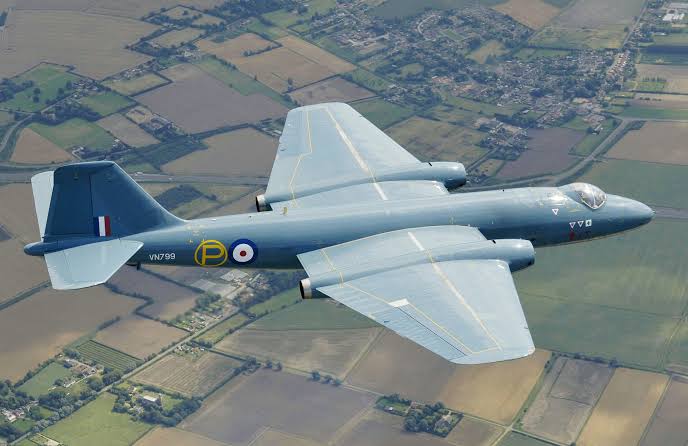
The requirement for the new bomber was to have the outstanding high-altitude bombing ability as well as high speed. These requirements could only be achieved by making use of the newly discovered technology of jet propulsion. The very first prototype of this aircraft took its first flight back in May of 1951 and was the RAF’s first-ever jet-powered bomber aircraft.
The aircraft during the course of its entry in the RAF set many of the flight world records. The aircraft became a major export aircraft following its capabilities to evade the jet-powered interceptor aircraft coupled with its high-altitude bombing.

The later models of the English Electric Canberra were highly upgraded and even a few of the nuclear strike English Electric Canberra variants were also produced. The basic roles for the English Electric Canberra were the following.
- Tactical bombing aircraft
- Photographic aircraft
- Electronic reconnaissance aircraft.
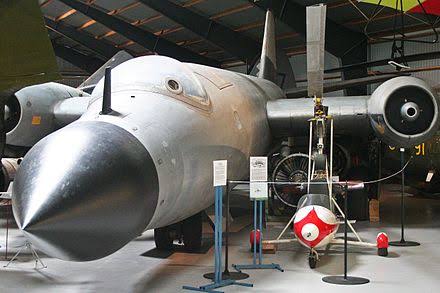
During its long service starting from the late 1940s, the aircraft served in numerous military conflicts across the world for its numerous operators. The very last of the English Electric Canberra aircraft was retired after 57 years of their service with the RAF.
Origin:-
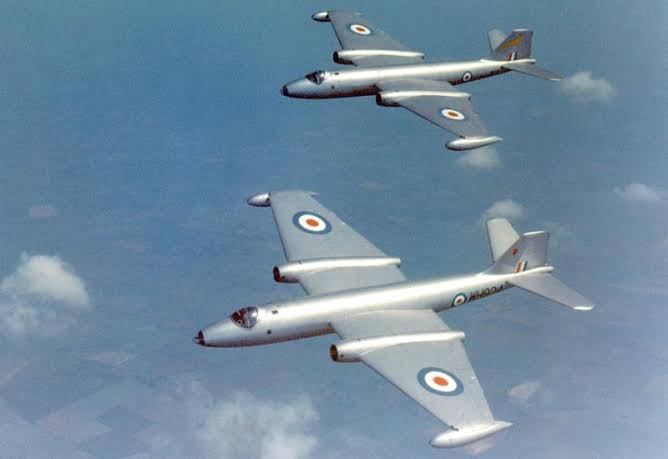
Near the end of World War II, the RAF had already was in the availability of a two-engine aircraft named de Havilland Mosquito which acted as their fast bomber. It was nicknamed as the Wooden Wonder due to its dominant wooden airframe. The aircraft reached a production number of nearly 7781 units in short 10 years of its service. However, with changing times and the advent of jet propulsion technology, the Air Ministry of UK also ordered for a new high-speed bomber aircraft back in 1944. That requested aircraft turned out to be the English Electric Canberra.

The company behind the creation of this aircraft was known as English Electric that had a high reputation in the UK at the time due to their aircraft like the Halifax Bombers and the Handley Page Hampden that served extensively for the UK and the Allied Forces.
Company, after hearing about the request of the Air Ministry formed a team of engineers back in 9145 to work on a design of an aircraft proposed by a designer named William E.W. Petter.
Design:-
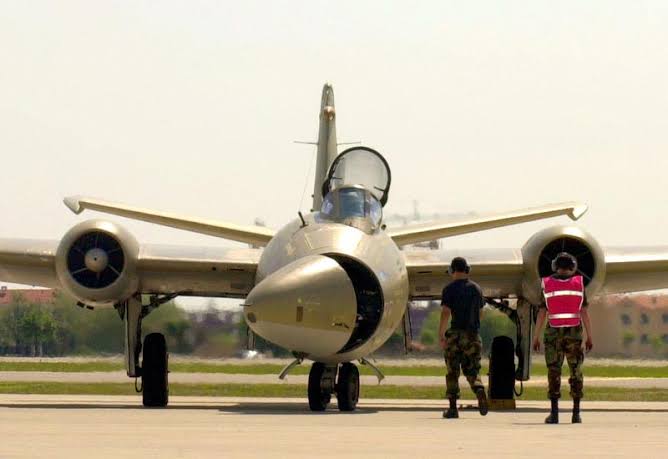
The engineers at the English Electric formed a design for a clean and conventional aircraft that could house in 3 crew members for various tasks of a bomber. The cockpit of the aircraft was mounted at the forefront of the aircraft. The fuselage was tubular in shape that had mainplanes mounted to its sides and following the end of the fuselage was a single tail fin.
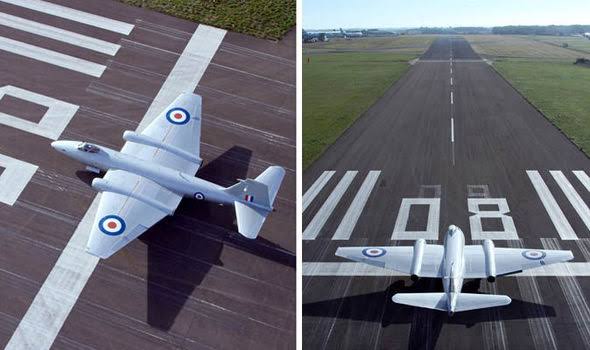
The undercarriage wheels of this design were retractable and had the tricycle arrangement with 2 main legs and one nose leg. As for the engines, they were fitted away from fuselage inside the streamlined and cylindrical nacelles. These engines would aspirate from the front while the exhausting was carried out from the tail end.
Development and First Flight:-

The real physical work on the design of the English Electric Canberra’s first prototype was started way back in 1946 when World War II was long since over in the Spetmber1945. This sudden decrease in the military efforts would mean that the progress on the production of the English Electric Canberra would get slowed down by multitudes.

This was the main reason that the English Electric Canberra took its first flight back on 13th May 1949. Only a few minor changes were made in its design whereas the engines were given upgrades for added power and the fuel tanks were added under the wings for giving it increased range.
The name of the aircraft Canberra was given to it in honor of the capital of Australia also known as Canberra. The reason for this was that they had committed to purchasing this aircraft even after the war ended and the aircraft was still in production.
Britain and other operators for the Canberra:-
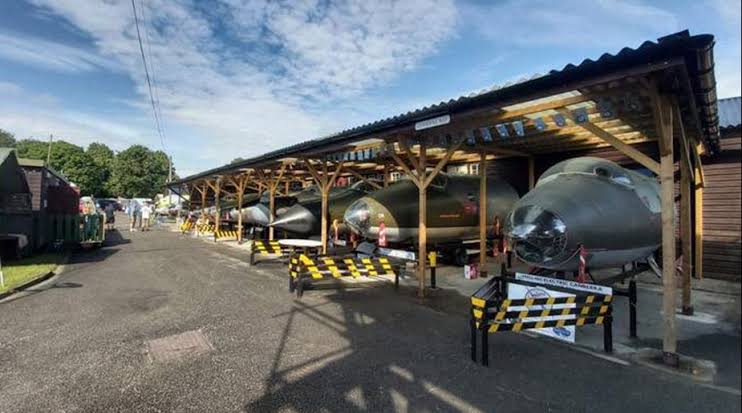
After passing through its evaluation and the testing phases the English Electric Canberra was brought to the production line for being produced too quickly. The aircraft reached a total of 782 units to fill up the 61 squadrons of RAF.
As for Australia, they operated 58 of these English Electric Canberra aircraft from their 6 squadrons.
Other notable operators for the English Electric Canberra include the following nations at the time.
- Chile
- Ecuador
- Ethiopia
- France
- India
- new Zealand
- Peru
- South Africa
- Sweden
- Venezuela
- West Germany
- Zimbabwe which was called Rhodesia at the time.
The U.S. was highly impressed by the English Electric Canberra and that led to them creating their own medium-range bomber like the English Electric Canberra, they named as Martin B-57.
Powerplant, speed, and other features:-

The English Electric Canberra was powered by the 2 of the Rolls Royce Avon RA. 7 Mk 109 turbojet engines, each of which created a thrust of 7400 lbs. this propelled the aircraft for a top speed of nearly 580 mph for a range of 3380 miles at a maximum ceiling altitude of 49213 feet.
Armaments:-
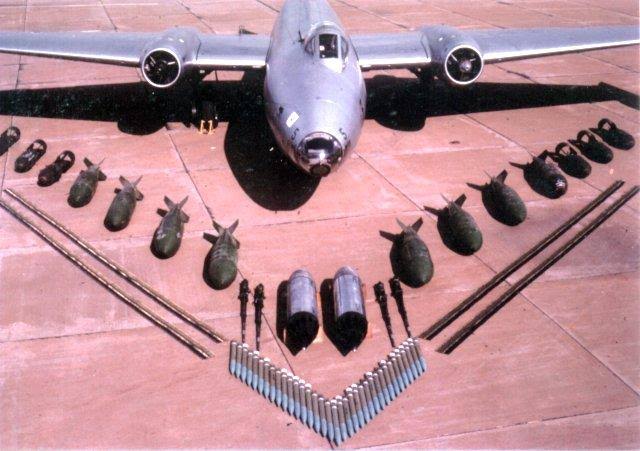
As the English Electric Canberra was designed primarily to be a bomber, its design support for the bomb bay to be internal. Only the later models had hardpoints under the wings as well as 4 ventral gunpack cannons and the support to be equipped with rocket pods.
Some special English Electric Canberra aircraft were marked for carrying as well as dropping the nuclear payloads. When an English Electric Canberra was carrying a gunpack, it was equipped with the 4 of the Hispano Mk.V cannons of 20 mm.
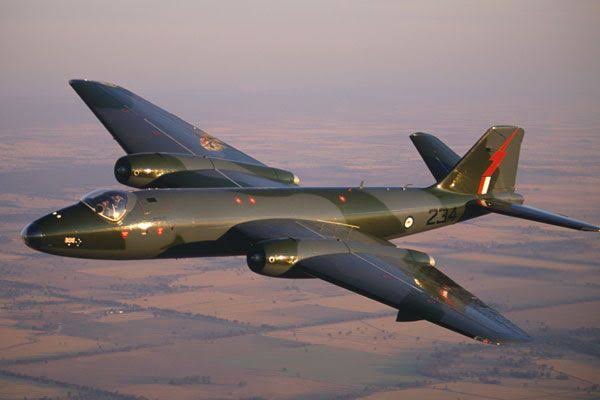
The total bomb-carrying capacity of the English Electric Canberra was about 8000 lbs, which was used for carrying the following armaments.
- 2 of the 37*51mm rocket pods or to be equipped with the 2 of the Matra 18 * SNEB 68mm rocket pods
- 2 of the AS-30L air-to-surface missiles
- Conventional drop bombs
- A single tactical nuclear bomb
Holder of several notable flight world records:-

During its long service spanning up to nearly 57 years, the English Electric Canberra also achieved several of the flight world records. These records are as follows.
- First-ever jet-powered and nonstop transatlantic flight back in 1951
- World altitude record for 63668 feet back in 1953
- World altitude record for 65889 feet back in 1955
- World altitude record for 70310 feet back in 1957
Retirement:-
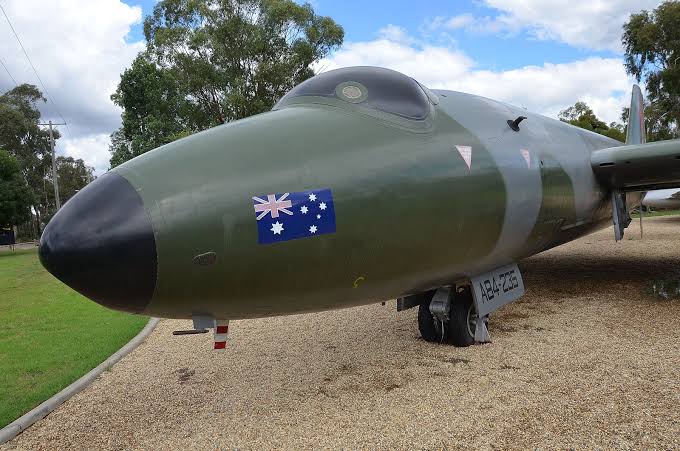
English Electric Canberra, unlike many of the bombers of its day, the World altitude record for 63668 feet back in 1953 was able to serve the RAF for an exceptionally long time period of 57 years following its first flight. The aircraft was finally retired from its service by RAF back in 2006.
Related Content
Interesting facts about the AMX International AMX; The Ground-Attack Jet Fighter
Amazing Facts about the BAE Systems Hawk; The Advanced Trainer Aircraft

